Elizabeth "Hooters" (1/2)
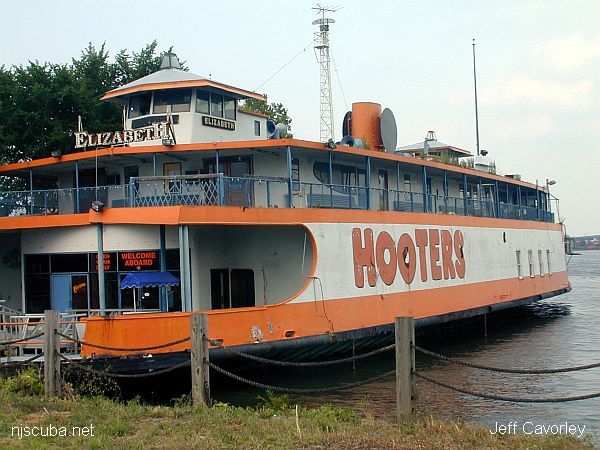
- Type:
- artificial reef, ferry, Central Railroad of New Jersey, USA
- Name:
- All CRRNJ ferries were named for New Jersey towns - Lakewood, Bound Brook, Red Bank, Plainfield, Elizabeth, Wilkes Barre, Cranford, Somerville, Westfield, and Bound Brook
- Built:
- 1901, Harlan & Hollingsworth Wilmington DE USA, as Lakewood
- Specs:
- ( 200 x 44 ft ) 1016 gross tons
- Sponsor:
- NJ Coast 2005 Initiative
- Sunk:
- Wednesday August 3, 2005 - Cape May Artificial Reef
- GPS:
- 38°50.682' -74°43.078'
- Depth:
- 75 ft
The Lakewood was built in 1901 by the Harlan and Hollingsworth Shipyard in Wilmington, Delaware. Along with her sisters Bound Brook and Red Bank, Lakewood took up service for the Central Railroad of New Jersey's ferry line, which ran from present-day Liberty State Park, Jersey City to Liberty Street, Manhattan. These screw-propelled, steel-hulled, double-decker, double-ended boats replaced earlier paddlewheelers in a service that dated back to the 1600s.
In 1949, after an almost perfect forty-eight year safety record, Lakewood was gutted by a fire while in dry-dock for annual inspection and maintenance. The entire wooden superstructure was destroyed. The timing was especially bad for the company, which had recently scrapped two vessels that were actually younger than the Lakewood, and was now short of hulls! Therefore, it was decided to repair her, when otherwise the burned-out hulk would probably have been written-off.
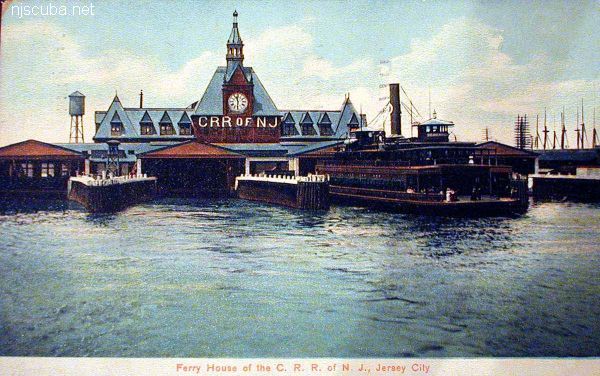
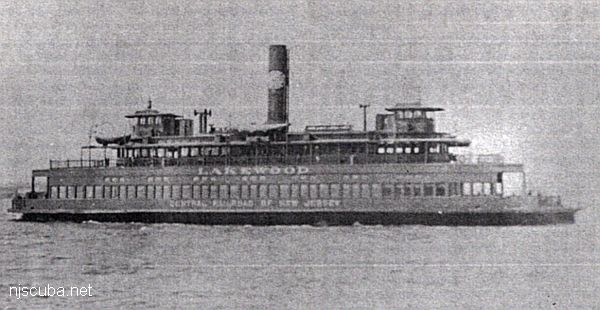
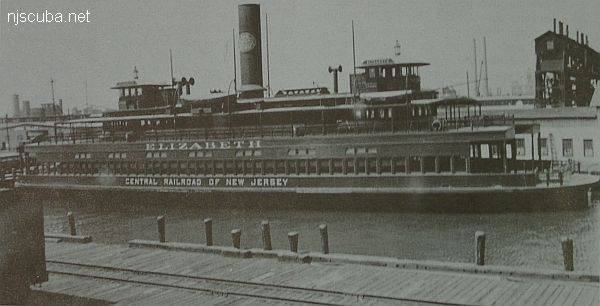
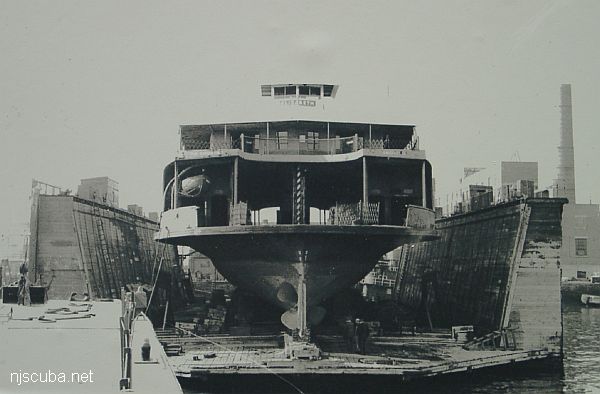
In 1950, the Lakewood began her career anew, with a new name: Elizabeth II. Although she was technically the third Elizabeth and not the second, she was given the exact name of one of the other boats that had recently been scrapped. Notably, this continued the name Elizabeth in service for the CRRNJ, as it had been since the early days of the company's founding. The modernized version of the old Lakewood was completely rebuilt in fire-proof steel. However, the 1000 hp four-cylinder triple expansion steam engine was retained, making the Elizabeth one of the very last steam-powered craft on the North River, as that stretch of the Hudson was once known.
In the 1960s, business for the CRRNJ railroad and ferry lines began to decline, the same as they did for other lines, such as the Delaware, Lackawanna, and Western Ferry Service. As a result, the marine fleet of the CRRNJ began to fall into disrepair. One by one ferryboats were taken out of service, and many of them cannibalized for parts for their sister ships. This process did not provide much financial relief, and finally, the old ferry line was down to one boat, Elizabeth, and two boats leased from the City of New York. Finally, in 1967 the CRRNJ went into bankruptcy, from which it could not recover. On April 22 of that year, with Captain Boyle in the pilothouse, the Elizabeth made her final crossing with a Coast Guard Cutter following ( No honor guard - the escort was in case of a breakdown, as the boat was in major disrepair. ) Her engine never ran again. Thus ended the 306-year history of Hudson River ferries; thereafter, and until very recently, all traffic ran on bridges and tunnels.
However, the history of the Elizabeth did not end. In the years after the Central Railroad of New Jersey, the veteran ferryboat took on a variety of careers. First, the old Elizabeth was purchased by PSE&G, for use as a floating museum at the Salem nuclear power plant on the Delaware Bay. Here she was renamed the Second Sun, and contained exhibitions on the history of energy from the dawn of human civilization to the present; her car deck converted into an audio-visual center.
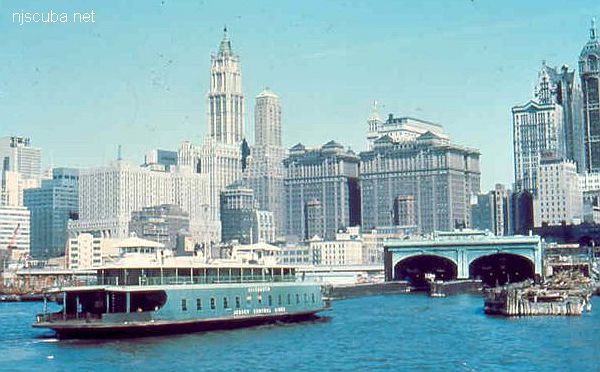
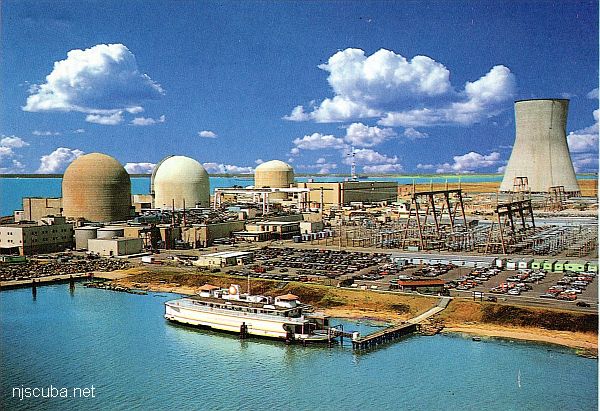

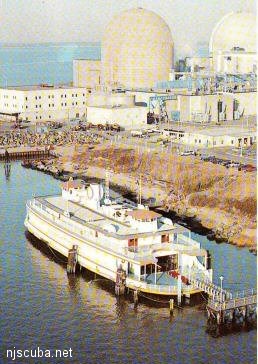
Right & above: the Second Sun
The boat switched careers again in 1992 when she was towed from her mooring at the power plant upriver to Philadelphia. The 200-foot-long ferry wound up as a waterfront restaurant at the foot of Callowhill Street. It operated as a classy eatery called the Elizabeth for a few months, then spent 7 years as a Hooters ( "delightfully tacky, yet unrefined" ) before closing in January 2002.
There was some hope that the Elizabeth could be returned to her old home in Jersey City and restored as a display in the Liberty State Park, but that hope faded when the vessel sank at her pier over the winter of 2003-2004, and remained there for over a year. Finally, in 2005, the old ship was raised, partially stripped, and sunk at sea as an artificial reef.
history by Jeff Cavorley
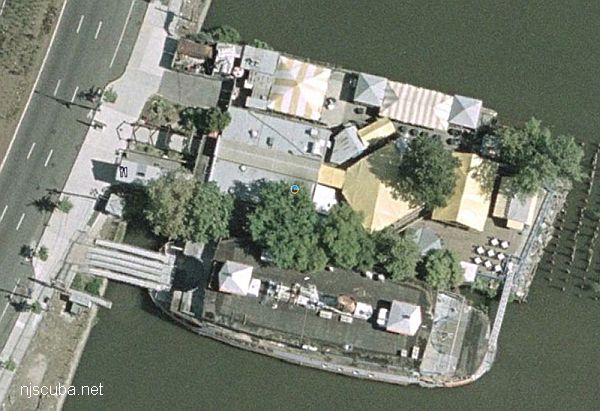
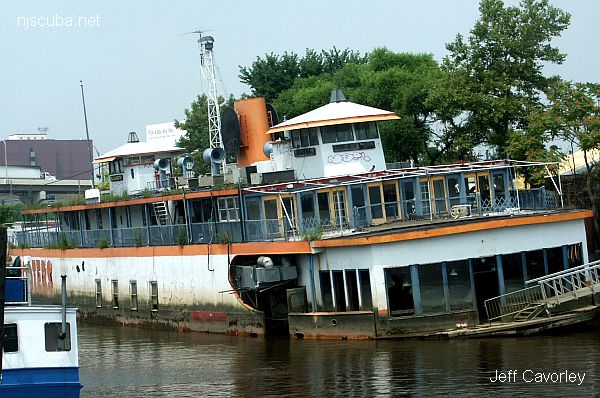
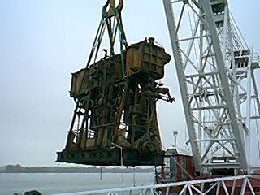
During the raising and cleanup process, the rare and historic 45 ton compound steam engine and much of her other machinery was removed for restoration as museum pieces. So at least part of this historic vessel - the last Hudson steam ferry - was saved. What a pity that the whole ship could not have been preserved and displayed at her former home, now Liberty State Park, but a year sunk in the Delaware River muck had damaged her beyond any reasonable repair. The engine and other parts will eventually go on display at the Penn's Landing museum. The props and rudders had long since been removed and sold for scrap.
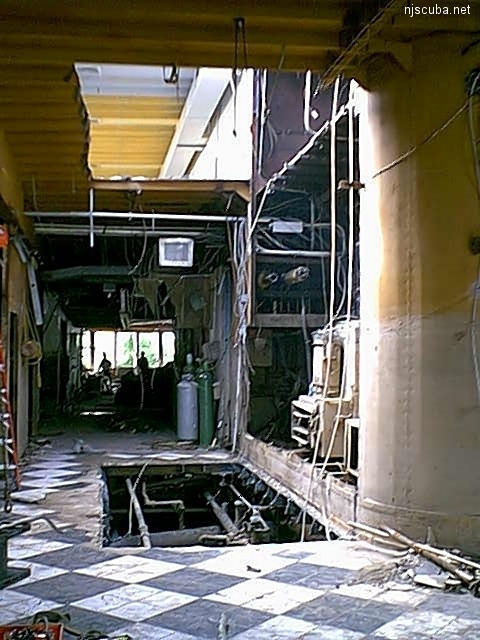
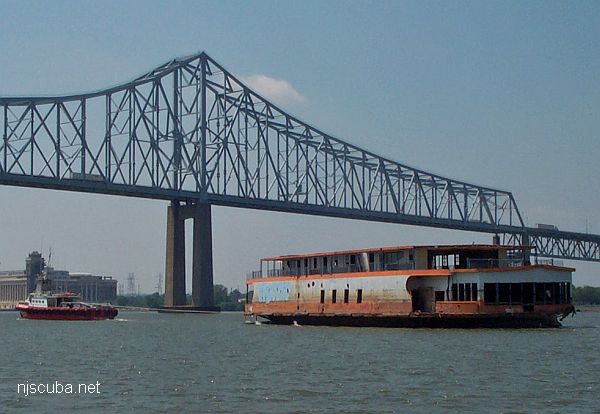
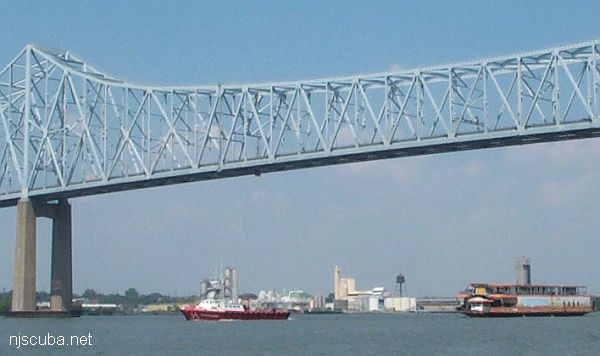

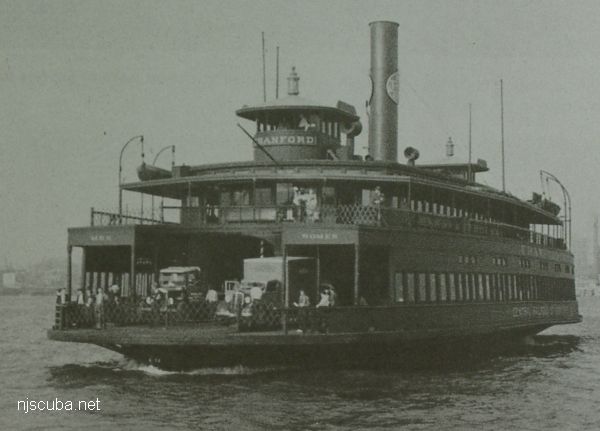

Questions or Inquiries?
Just want to say Hello? Sign the .